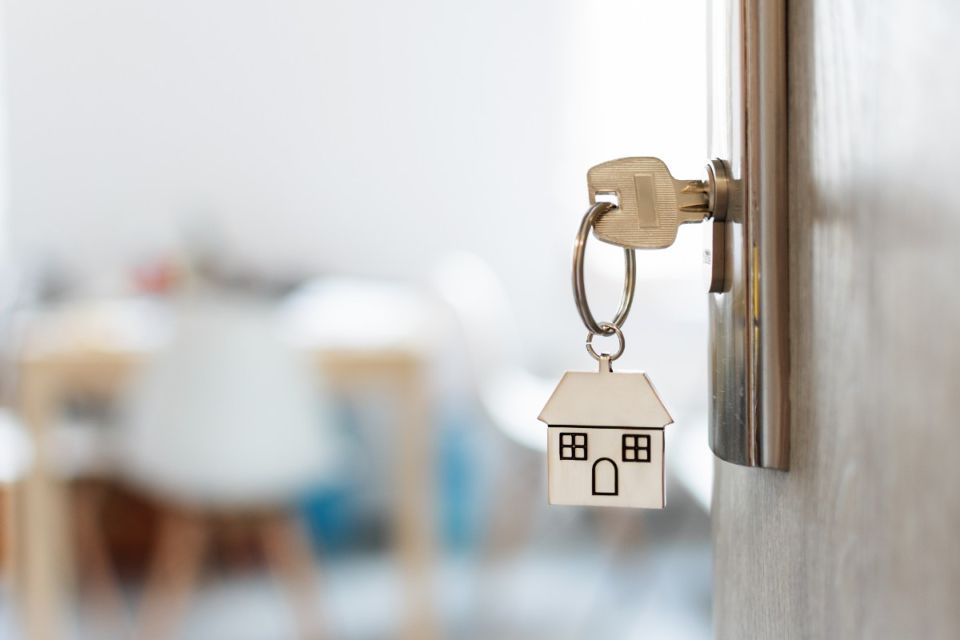Affordability has become the big challenge, with prices and interest rates double what they were just a few months ago. Faced with a scenario like this, the middle class withdraws from the market in the face of the almost impossible mission of finding a home that they can buy.
The real estate market in the United States continues to be a difficult challenge to overcome, almost for all buyers, but mainly for the so-called middle class.
This sector of the population not only faces prices that exceed their budgets, but costly credit conditions that leave them out of the market; the result: under the current moment, the American middle class will hardly be able to buy a home.
While it is true that new home prices have cooled in recent weeks, from all-time highs reached in the first half of the year, they remain elevated, which has also caused sales to plummet.
Just last August, the national median home price on active listings was $435,000; figure that, although it is lower than that obtained in July, is still 14.3% higher than in August 2021
“Buyers’ attention has shifted to affordability as rising interest rates and tight inventory have made it difficult for many to find a suitable home in their price range,” cites a recent Realtor.com analysis.
Even in the most affordable markets, prices remain out of reach for middle-class shoppers, who also face much higher prices for food, fuel, health care and other inflation-driven goods and services.
According to Realtor.com’s report, in today’s hottest markets, median listing prices were set at $332,000 last August, 23.6% lower than the national average, though out of range for middle-class buyers.
In the middle of this scenario is another player that limits the middle class: mortgage interest rates, which were 250 basis points higher towards the end of August, compared to 2021.
Just last week, a report from the Mortgage Bankers Association reported that the interest rate on 30-year fixed-rate mortgages had breached the 6% ceiling, levels not seen since 2008.
Buyers walk away
The budgetary challenges that buying a new home currently represents in the United States, for the middle class sector, have led them to postpone their decision.
According to a Morning Consult survey published last March, more than 60% of those who were consulted said that they had decided to postpone or delay their purchase due to high prices.
At the time, the median home price in the country was $400,000, according to data from Realtor.com; almost $100,000 dollars more compared to the prices for that same month before the covid-19 pandemic, in 2019.
Six months after that all-time high and with prices falling, the average cost is still $35,000 more expensive, which represents a real challenge for home buyers.
By last June, the price of housing had already climbed to $447,000 dollars; despite the fact that, in that month, the housing inventory increased by a remarkable 9% and the demand for housing cooled.
But neither the fall in prices nor the withdrawal of buyers, who had months of fierce bidding wars in the face of the very complicated housing shortage, have brought relief to the so-called middle class.
Who are the middle class in the US?
According to a Pew Research Center study, Americans considered middle class are those who, as singles, earn $30,000 to $90,000 a year.
Whereas, for a family considered within this income level, with three members, their income would have to be between $52,000 and $156,000 dollars per year, already with an inflationary adjustment made by this research center between 2018 and 2021.
For this sector, the challenge of affordability is not minor, since the availability of housing that fits their budgets is significantly lower, compared to the housing stock that was on the market before covid-19.
According to data from the National Association of Realtors, as of last February, around 250,000 homes for sale that were considered affordable were available in the country, compared to 656,000 in the months before the pandemic.
These homes are now considered affordable for households with annual incomes between $75,000 and $100,000, which leaves out a significant swath of buyers who fall within the middle-class income brackets.
“Unfortunately, the middle-class dream of owning a home has been fading away,” Redfin Chief Economist Daryl Fairweather told CBS, adding that owning a home in the country today “is a indicator of the upper class, now”.

